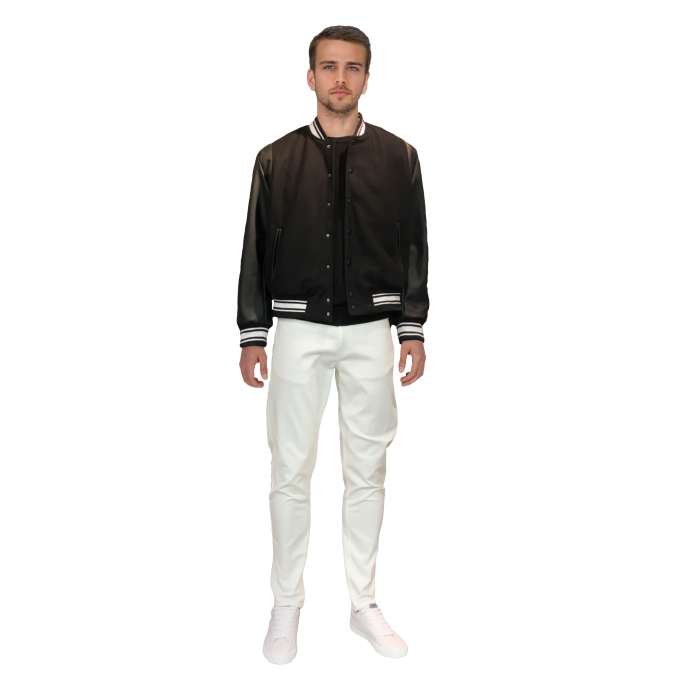Zoe Dvir (@zoedvir) appears to be your typical millennial model influencer. She is gorgeous, with a full head of curly hair, deep brown eyes and a button nose.
Dvir travels, meets friends and shares the clothes and products she likes best on her Instagram page. So far, she has 28,000 followers.
But what makes her unique is that she is not actually real – well a real person, that is. She is a digital personality created with computer-generated imagery by a company with the same name.
View this post on Instagram
The man behind the brand is Tal Melenboim, 42, a serial entrepreneur turned content creator who recently founded VFR.ai, a fast-growing technology company that manages and funds multiple ventures that use and develop different artificial intelligence-based technologies, tools and services within the media, consumer applications and advertising sphere.
Zoe, modeled after his biological daughter Shoval, is the first stage in his dream of a world where every brand, product and service has a virtual face.
According to Melenboim, the global digital advertising revenue is expected to grow to $460 billion by 2024, and he plans to be a part of it.
His company uses a unique stack of technology built from in-house technology and innovative tools to create these virtual people. The team consists of programmers to fashion stylists so that Zoe can provide the whole value chain for virtual entities - from creation to virtual brand management.
Take Ella Stoller (@itsellastoller). She is listed on Instagram as a “fashion model.” Her bio simply says, “Creative head. Moving to Berlin. Dog mom.” Stoller has amassed 10,000 followers in less than 100 posts, sharing images of herself with big-name brands like Prada.
There is yet a third model, too: Linda Knight – @thelindaknight.
“Our virtual entities have proved successful in Israel with live campaigns and extensive media coverage,” Melenboim said, noting that his company has signed the world’s first virtual talent contracts with model agencies in Israel, Germany and the United Arab Emirates. His “girls” have even starred in major fashion weeks wearing designer clothes.
To make the women look real, the company leverages machine learning and AI. Neural networks bring them to life, integrating sound, text, facial expressions and movement. And everything is automated.
Melenboim is a software developer and a content creator. He is also a gamer.
“Content for me is everything I can see and feel – but it has to be digital,” Melenboim said. “I am not an artist, but I know how to create new worlds.”
And he is making a lot of money from having fun in these virtual worlds.
After creating Zoe, he developed a way to use these models through another company called Styletech, a visual AI solution that he believes will transform the e-commerce industry.
Styletech is making avatars for the middle-pages of e-commerce sites.
The company provides fashion retailers with an unlimited supply of “models” at a lower cost than using real people. The process is faster, and the possibilities are endless using the company’s cutting-edge AI technology that can convert simple photos into multiple, high-quality looks personalized for every shopper.
The fashion industry is demanding more inclusivity when it comes to size, skin tone and age. To accomplish this, companies need to hire multiple models, spend days in photo shoots, edit the pictures and then put it all together.
With Styletech, companies can simply pick a model from a limitless virtual variety and get a look-book with the styling of their choosing. Product styling can be adapted in real time to fit the viewer. Skin tone and size can also be altered based on learned shopper preferences.
For instance, if a shopper tends to make more purchases when she sees a model with brown versus blond hair, when she clicks on a certain item, a brown-haired model can be wearing it.
“We do not tell the customer that the models are not real, because this is not the focus with Styletech,” Melenboim explained. “Whereas Zoe is a virtual personality, here it is just about selling the clothes – and the clothes are real.”
Right now, the company is working with small brands. But in the future, Melenboim said he envisions the technology being sold as a software as a solution service so that any website can use the tech.
But that is not all.
Melenboim has also developed a company called Mythreal, a solution that allows game developers to seamlessly integrate and distribute their games through connected TV (CTV).
CTV is a device that connects to or embedded in a TV to support video content streaming. Most people have heard of Xbox, PlayStation, or Roku. In the case of Mythreal, it works with Roku, but puts the computing power into your personal smartphone.
All of Melenboim’s family is in on the experience.
His wife collaborates with him on the accounting side of VFR.ai. His youngest daughter, Avigayil, 14, is a gamer.
“She plays with me all the time,” he said.
Michal, 17, is into the stats and the data.
And remember, Zoe is really Shoval, 18.
“All three of them are actually involved in their own way,” Melenboim said with a smile.
“I really love what I do,” he stressed, “so much so that I do not feel like I am working. I play all the time.
“I feel like the world is just calling me to do more and more,” he continued, “to create more and more content for the virtual world.”
This article is written in cooperation with VFR.ai.




